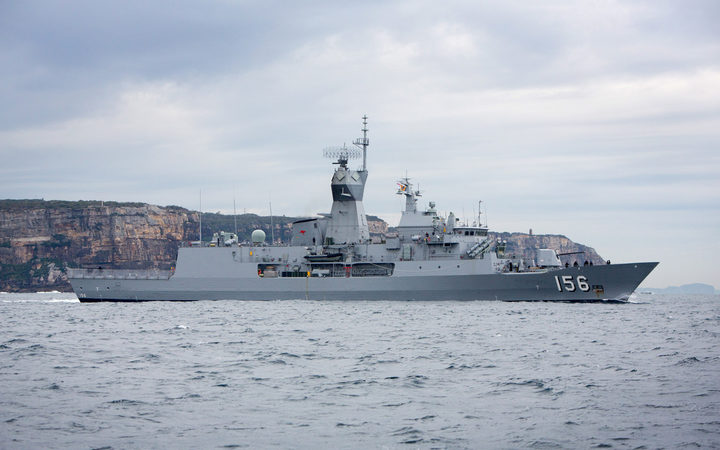Australia withdraws Navy operations in Middle East to focus on Asia-Pacific, China
A three-decades-long Australian naval presence in the Middle East will come to an abrupt end this year as the Federal Government grapples with an increasingly uncertain strategic environment closer to home.

The last Australian Navy ship deployed to the Middle East, HMAS Toowoomba, returned to Australia in June this year (file picture). Photo: Royal Australian Navy
Defence Minister Linda Reynolds has announced Australia will no longer send a Royal Australian Navy ship to the Middle East every year.
The last Australian Navy ship deployed to the region, HMAS Toowoomba, returned to Australia in June this year.
Australia will also withdraw from the United States-led naval coalition patrolling the Strait of Hormuz at the end of 2020.
That means around 30 years of Australian maritime operations in the Middle East – largely focussed on counter-terrorism and counter-piracy operations – will soon come to an end.
In a statement, Senator Reynolds said the government’s priorities had shifted.
“This year alone has seen [the] Navy respond to the bushfire and COVID-19 crises, a five-ship deployment throughout South-East Asia and the Pacific, a continued commitment to initiatives under the Pacific Step Up, and several highly successful activities with our regional partners,” Reynolds said.
“We now face an increasingly challenging strategic environment which is placing greater demand on ADF resources closer to home.
“As a result, the Australian Defence Force will reduce its naval presence in the Middle East to enable more resources to be deployed in our region.”
The shift was flagged in the government’s recent Defence Strategic Update, which declared that deteriorating strategic circumstances would force the military to focus more sharply on the Indo-Pacific and Australia’s immediate region.
China has engaged in a massive naval build-up over the last decade, as well as asserting increasing control over the contested waters of the South China Sea by building a series of military fortifications.
The relationship between the United States and China has also become increasingly hostile, sharply raising the risk of conflict in the region.
Australia has participated in a growing number of naval exercises in the region with a series of allies and partners, including the United States and Japan.
Earlier this year Australian warships encountered the Chinese Navy while sailing near contested islands claimed by Beijing on their way to trilateral exercises.
Next month the Australian Navy will also re-join the Malabar naval exercises with the US, Japan and India after a hiatus of more than a decade.
Senior officials, military officers and Morrison government ministers have been contemplating the shift away from the Middle East for several years.
Last year there was debate inside the Federal Government when the Trump Administration asked Australia to join a US-led naval coalition to protect ships in the Strait of Hormuz near Iran.
In the end, the Morrison government agreed to send a surveillance aircraft and a frigate to join the mission.
But one government source told the ABC the decision was “pretty hotly contested.”
The Navy’s Chief of Joint Operations, Lieutenant General Greg Bilton, said the change announced by the government was “historic” and Senator Reynolds declared Australia could be “proud” of its naval contribution.
“For over 30 years we have supported freedom of navigation, maritime security and the free flow of commerce in the Middle East,” she said.
“In cooperation with our partners, our commitments have been invaluable in disrupting global drugs trade, supporting the reduction of funding lines to terrorism activity and building the capacity of regional forces.”
– ABC
